Beef Tapa – Pindang Baka for Tapsilog
As an Amazon Associate and member of other affiliate programs, I earn from qualifying purchases.
It was my dad’s birthday this week and I thought a lot of him, his favorite dishes like homemade Beef Tapa – Pindang Baka (in Kapampangan) for Tapsilog and how he liked his food prepared. One memory that stood out was that nearly every ingredient in our home was grown in our backyard (by dad himself), in our family’s farms, every dish made from scratch by mom herself.
My parents practiced ‘farm to fork’ way before it was even the buzz words they are today. I ate eggs that were from our own poultry, vegetables tilled from our own soil, fruits from our backyard trees. It was just the way it was. Breakfast at our home started at 6:30 AM daily, schooldays or weekends. It was hearty and delicious. So it was not difficult for my parents to make it mandatory for all of us to sit and eat well the entire meal, everyday.
There was a bowl of rice, sunny side eggs (yes, they were organic from free-range chickens in our backyard), freshly picked ripe, red tomatoes (also grown by dad) and the centerpiece of it all ‘pindang baka’ or beef tapa, cured by my mom’s hands herself.
‘Pindang’ (say ‘peen-dangh’) is a Kapampangan term for curing and preserving meat. This is an old cooking method of preserving pork, beef and meat which originated from the times when refrigeration was not available. The practice of ‘pindang’ results in a divinely delicious way to cook meat, so I’m guessing this is why it has stayed on as a basic cooking method to this day.
I can still clearly see how mom’s long slender fingers mashed and macerated the meat till it turned darker and had a shiny glaze over it. The sheen came from the salt-sugar mixture added in large quantities over the sliced beef or pork. She turned the meat pieces over and under in the large bowl. She mashed, mixed, squeezed then repeated the process over again. Then she placed the cured meat in large plastic bags which went into plastic containers. We had a big freezer so the ‘pindang baka’ was stored there.
A few days after, the cured meat was ready. At breakfast, the beef slices were taken out, thawed then tossed into the hot skillet with a little oil and garlic cloves. I salivated at the sound of the hiss and sizzle coming from the frying pan.
The combined aroma of frying garlic, sweet and salty cured meat pan searing blended well as steamy vapors rose upwards to the kitchen ceiling. Quickly, mom poured the cooked beef strips glistening and tender onto the large oval platter. In the same pan, she added leftover cooked rice from dinner the night before. I saw her put a little more oil and minced garlic before the rice. She mixed the garlic rice swiftly, seasoned and expertly put the whole assembly of rice, beef tapa, eggs, tomatoes on the breakfast table for us to enjoy. To wash it all down, there was freshly made coffee (from organic beans), fresh milk and a cold pitcher of tart dayap (lime) juice. It was only breakfast, but in our home, it was always the start to a marvelous day.
Beef Tapa - Pindang Baka for Tapsilog
Equipment
- Large Resealable Plastic Bags - to store the meat
- Large Skillet: 12 inches in diameter
Ingredients
- 1 pound beef skirt steak sliced thin
- 2 Tablespoons salt
- 3/4 cup granulated sugar
- 1 teaspoon paprika powder
- 1/2 cup pineapple juice
- 1 Tablespoon white wine
- 2 Tablespoon vegetable oil divided, 1 Tablespoon for cooking beef, the rest for garlic rice
- 4 cloves garlic minced, divided use 2 for beef, 2 for garlic fried rice
- 2 to 3 cups cooked white rice a day old, must be refrigerated
- 1 teaspoon salt for garlic rice
- 1 teaspoon ground black pepper for garlic rice
- 1 to 2 whole tomatoes sliced,for relish, to serve with beef
- 1/2 cup water to cook the beef at the start water
Instructions
- Step 1 -To cure the meat : In a large, non-reactive bowl mix together the dry rub of salt, sugar, paprika. Add the sliced meat to this mixture. Rub each piece well with the dry mixture. Mash and macerate well with your hands to ensure the dry ingredients incorporate well. Turn the meat slices over and under if needed to mix everything well.
- In a separate small bowl, mix the pineapple juice and wine well. Add this to the meat mixture that has the dry rub. Toss and turn the meat pieces so the mix blends well.
- Store the cured meat in large plastic bags and seal well making sure no air gets inside. Place the plastic bags inside a large plastic container and cover tightly. Keep the meat in the freezer for 3 to 5 days before cooking. When getting ready to cook, thaw the frozen meat till pieces are nearly room temperature.
- Step 2 - To cook the ‘pindang baka’ or beef tapa: In a large stainless steel skillet, over medium heat, add the thawed beef slices. Pour half a cup water (for half a pound of meat) into the skillet. Let the meat cook and tenderize for about 10 minutes. When the water evaporates and no trace of the liquid is left, add the cooking oil and garlic to the same skillet. The beef slices will turn a darker brown and have a shiny glaze over it as it sears in the pan. Cook for 5 to 6 minutes more till beef is well done. Transfer to a platter. Serve hot with garlic rice, eggs and a tomato relish.
- To cook garlic fried rice: Using the same skillet where the beef was cooked, add a tablespoon more of cooking oil and the minced garlic. When the garlic browns in 1 minute, add the day old cooked rice. Mix well so the pan flavors incorporate in the rice grains. Season with salt and pepper.
- Cook’s comments: The frozen cured beef will keep in the freezer for one to 2 months. I cure a large batch of beef and keep them in portions in the freezer, to be taken out as we go along. Even on busy weeknights, this beef tapa works well for a quick dinner. You can substitute pork shoulder and make ‘tocino’ using this recipe.
- *Ingredients Notes Update: the amount of salt has been adjusted to two tablespoons for one pound of beef.
Hello, Friends! All the images and content here are COPYRIGHT PROTECTED. This means BY LAW you are NOT allowed to use my photos or content without prior permission. If you want to republish this recipe, please re-write it in your own words and simply link back to this blog to give proper attribution. It’s the LEGAL thing to do. Thanks for your cooperation. Email me at [email protected]
Nutrition
Notes on Nutrition: The nutrition information provided is an estimate and will vary based on cooking methods and specific brands of ingredients used.
Did you like this recipe?I have more Filipino Instant Pot recipes in my newest cookbook Instant Filipino Recipes: My Mother’s Traditional Philippine Cooking in A Multicooker Pot by Elizabeth Ann Besa-Quirino. I also have more classic recipes inspired by my mother’s cooking in my popular cookbook: My Mother’s Philippine Recipes. If you’re learning how to cook Filipino food or a fan of Philippine cuisine, buy my cookbooks and books on Amazon.com sold worldwide in paperback and Kindle format.
Copyright Notice: Hello, Friends! Please DO NOT LIFT OR PLAGIARIZE my original recipe, stories, photos or videos. All the images and content on this blog are COPYRIGHT PROTECTED and owned by my media company Besa-Quirino LLC. This means BY LAW you are NOT allowed to copy, scrape, lift, frame, plagiarize or use my photos, essays, stories and recipe content on your websites, books, films, television shows, videos, without my permission. If you wish to republish this recipe or content on media outlets mentioned above, please ASK MY PERMISSION, or re-write it in your own words and link back to my blog AsianInAmericaMag.com to give proper attribution. It is the legal thing to do. Thank you. Email me at [email protected]

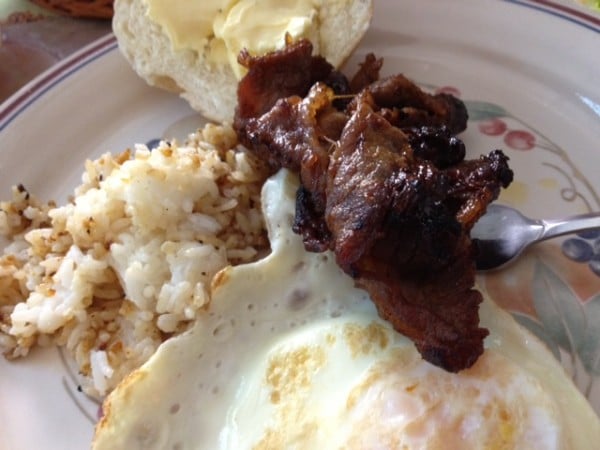
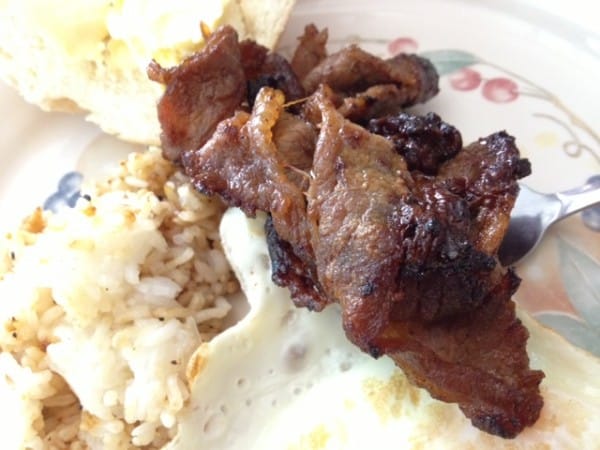
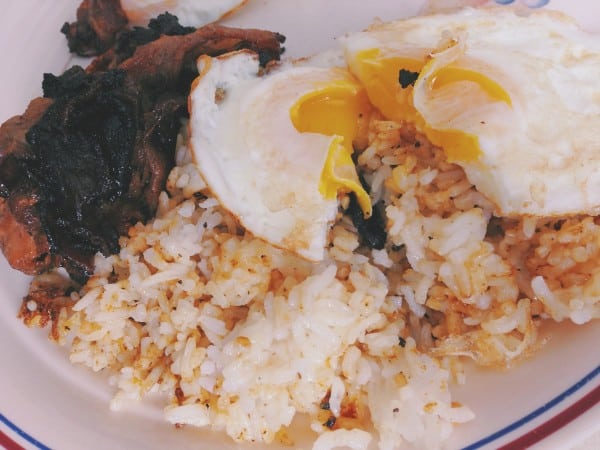
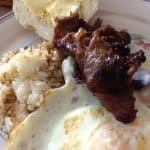

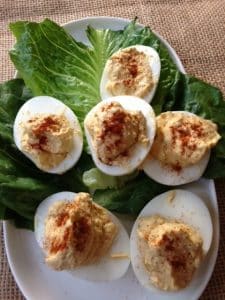
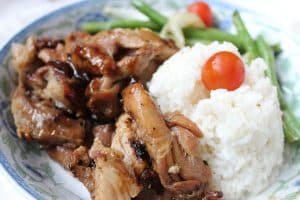
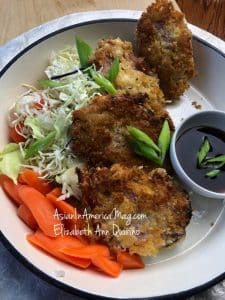

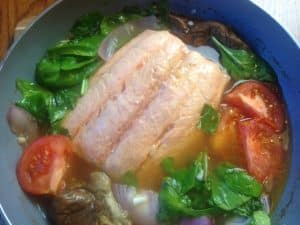
I love the story behind this lovely recipe! I didn’t know you could find cured meat in the freezer section, I need to locate some now! This recipe would be perfect for breakfast, lunch, or even dinner:-) Lovely, Sending hugs, Terra
Thanks, Terra. Yes, in Filipino or Asian groceries, you can find cured beef tapa, pork tocino & that’s fine, too. But it doesn’t take much effort to just marinate a few pounds of beef or pork and then just keep them in ziploc bags. Homemade is always best. Glad you liked my parents’ story. Hugs back 🙂
this post literally makes my mouth water
Thanks, CQuek!
I admire your parents for making all the family members sit together for meal and stay till the meal is over. While everyone is busy on their own schedule, someone has to decide a strict rule and stick with it. 🙂 This is another great dish!
Thanks, Nami. How nice of you to say that about my parents. Yes, they raised us the traditional way. Life gets so busy these days, it’s hard to do the same things they did for us. Do you also have a way to ‘cure meat’ in Japan? I am curious about other methods. Let me know 🙂
I love reading stories like yours especially with our loving parents and what they used to do. It’s been a long time since I heard the word “pindang or pinindang.” My grandma used the same term when curing beef. Thank you so much for sharing the story and the memory. I hope you are enjoying your week, Elizabeth! 🙂
Thanks, Chef Ray! Your kind comments and your taking the time to visit the blog, inspite of a busy schedule encourage me to keep going back to the kitchen. Yes, our parents did the best they could, in the simplest ways. Hope you’re staying cool in this heatwave. Salamat 🙂
I woulld like to ask permission from you that I would copy this recipe for my own use. I’m a typical mother looking for recipes that I can cooked for my children. I would like to try this recipe. Thanks
Thanks, Bernaditta. Glad you came by the blog. Yes, please do copy the recipe. I believe there’s a print button on the site you can click on. Enjoy this ‘pindang baka’ beef tapa recipe 🙂
OK I am totally enthralled by this method of curing meat. I am trying it asap! Love the sweet, salty and savory unami!
Hi Laura! Yes, this is absolutely a divine way to cure meat or just add a new flavor to it. Try this for breakfast, lunch, dinner or in between and even with sandwiches. Thanks for the blog visit!
Thank you for this recipe. I’ve just discovered your blog . Love your story on the beef tapa. I have just cooked the tapa after three days of marinating in the ref. I used the exact amounts but doubled the beef, as I felt 4 tbsp of salt was too much for a half pound of beef. I found the end results a bit salty for my taste, so I will re-make the recipe but lessen the salt next time. I am wondering if it’s because I didnt keep it in the freezer. I was thinking that if frozen, the marinade would not permeate the beef. All told, I am glad I found your recipe and will continue to tweak to my personal taste. Thank you! I love cooking as well and am kicking myself for not having paid attention to my elders back home when they made tapa, longanisa and all these comfort foods at home from scratch.
Hi Cecilia, thanks for the lovely comments and helpful info on your take on this recipe. I will go back to my recipe and take a look at the saltiness. Where are you based? Sometimes the weather conditions affect the end result of the food. Most of my recipes on this blog originated from my mom’s recipes which were cooked in the Philippines. I now cook everything in my American kitchen… where it is colder, the oven and stove top are different and even my seasonings are different and vary in flavor intensity. That said, I am always open to suggestions from my readers. Please come back and visit the blog again. Kind regards.
Hi Cecilia, thanks for your suggestion. I adjusted the quantity of the beef in the recipe. Enjoy this recipe 🙂
Is this supposed to be 4 TABLESPOONS of salt??? Came out very salty.
Thanks, Jhoanna. I adjusted the salt to 2 Tablespoons for one pound of beef. Thanks for noticing the typo error.